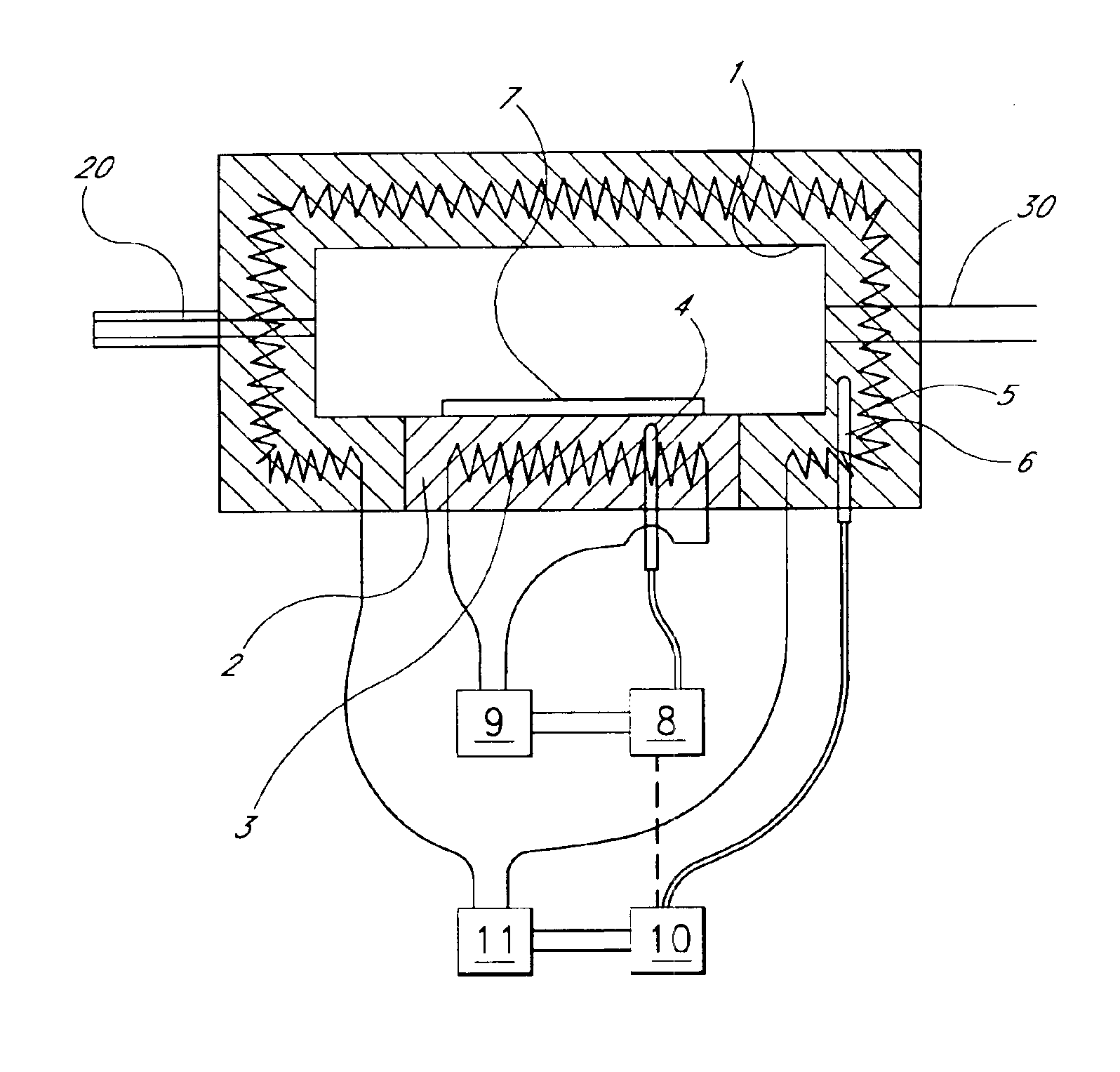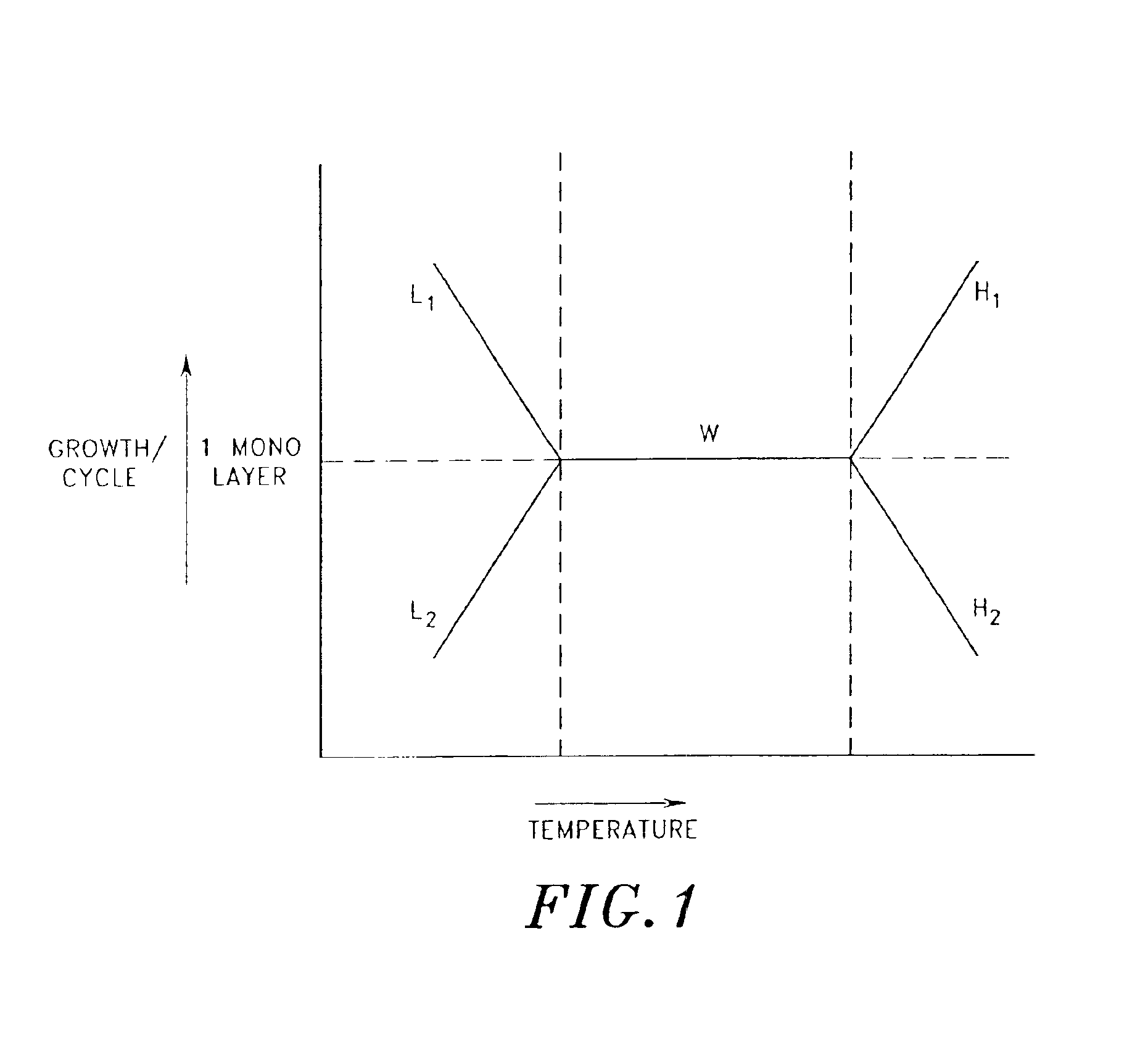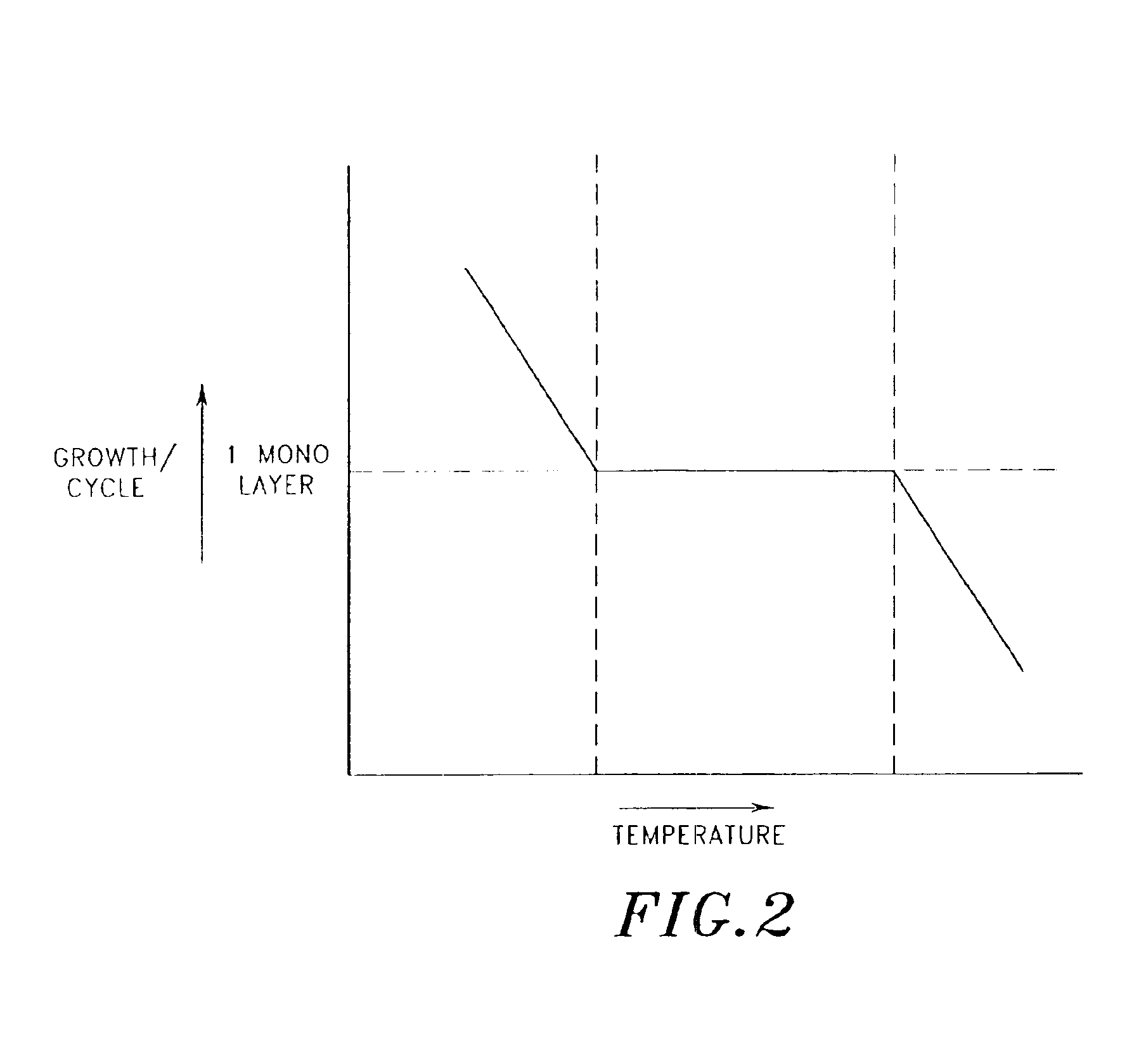ALD reactor and method with controlled wall temperature
a technology of ald reactor and wall temperature, which is applied in the direction of crystal growth process, ion implantation coating, chemical vapor deposition coating, etc., can solve the problems of ineffective removal from the reaction space, extra consumption of materials, and particularly harmful cold regions in the wall of ald reactor, so as to avoid harmful reactions on the walls
- Summary
- Abstract
- Description
- Claims
- Application Information
AI Technical Summary
Benefits of technology
Problems solved by technology
Method used
Image
Examples
example 1
[0034]A growth curve corresponding to FIG. 2 has been obtained for the growth of ZnSe from alternating pulses of elemental Zn and Se. A growth of about 1 monolayer per cycle occurs in the temperature range of 250° C. to 350° C. (Suntola, T. 1994. “Atomic Layer Epitaxy,” in Handbook of Crystal Growth 3, Thin Films and Epitaxy, Part B: Growth Mechanisms and Dynamics, D. T. J. Hurle, Ed. Elsevier, Chapter 14, pp. 601-663). Thus, the temperature of the substrate is preferably set between 250° C. and 350° C. while the temperature of the reactor walls are preferably set above 350° C. (resulting in reduced growth on the walls). In general, the reactor walls are also set below the temperature at which the reactants thermally decompose. It is to be noted, however, that in this example the source chemicals are elements and in that respect they cannot thermally decompose, although Se8 molecules may fragment into smaller selenium molecules.
example 2
[0035]A growth curve according to FIG. 3 has been reported for the atomic layer deposition of GaAs from alternating pulses of trimethylgallium and arsine. A growth of about 1 monolayer occurs in the temperature range of 490° C. to 520° C. (Suntola, T. “Atomic Layer Epitaxy,” in Handbook of Crystal Growth 3, Thin Films and Epitaxy, Part B: Growth Mechanisms and Dynamics, D. T. J. Hurle, Ed. Elsevier, Chapter 14, pp. 601-663 (1994)).
[0036]In this situation, the substrate temperature is preferably set between 490° C. and 520° C. and the temperature of the reactor walls is preferably set below 490° C. (resulting in reduced growth on the walls). However, the temperature of the reactor walls is also preferably maintained above the temperature at which condensation of the reactants would occur.
example 3
[0037]A growth curve according to FIG. 4 has been reported for the ALD growth of SnO2 from alternating pulses of vaporized SnCl4 and H2O (Viirola and Niinistö, Thin Solid Films, 249:144-149 (1994)). The ALD growth rate was maximal at a substrate temperature of about 500° C. When the substrate temperature was decreased from 500° C. to 300° C., the growth rate of SnO2 dropped from 0.30 Å / cycle to about 0.12 Å / cycle.
[0038]In this case, where the ALD reaction is considered thermally driven, in the sense that ALD reactions are facilitated at higher temperatures and inhibited at lower temperatures, it is preferable to set the wall temperature at a lower level than the substrate temperature. The reaction chamber wall temperature is also preferably high enough to avoid the condensation of source chemicals on the walls, which can produce particles that are harmful for thin film processes. The maximum possible vapor pressure of the source chemical in a chamber depends on the coldest spot in t...
PUM
| Property | Measurement | Unit |
|---|---|---|
| Temperature | aaaaa | aaaaa |
| Density | aaaaa | aaaaa |
| Density | aaaaa | aaaaa |
Abstract
Description
Claims
Application Information
 Login to View More
Login to View More - R&D
- Intellectual Property
- Life Sciences
- Materials
- Tech Scout
- Unparalleled Data Quality
- Higher Quality Content
- 60% Fewer Hallucinations
Browse by: Latest US Patents, China's latest patents, Technical Efficacy Thesaurus, Application Domain, Technology Topic, Popular Technical Reports.
© 2025 PatSnap. All rights reserved.Legal|Privacy policy|Modern Slavery Act Transparency Statement|Sitemap|About US| Contact US: help@patsnap.com



